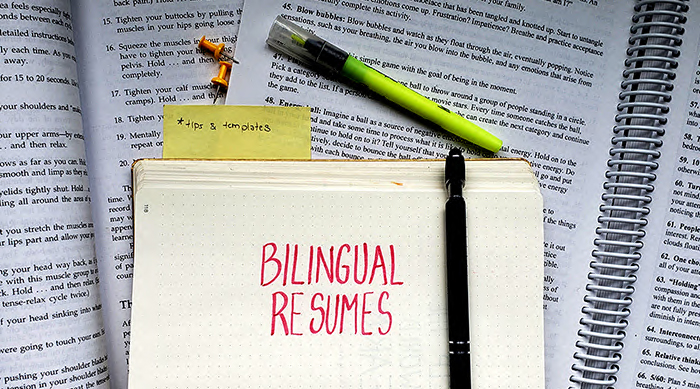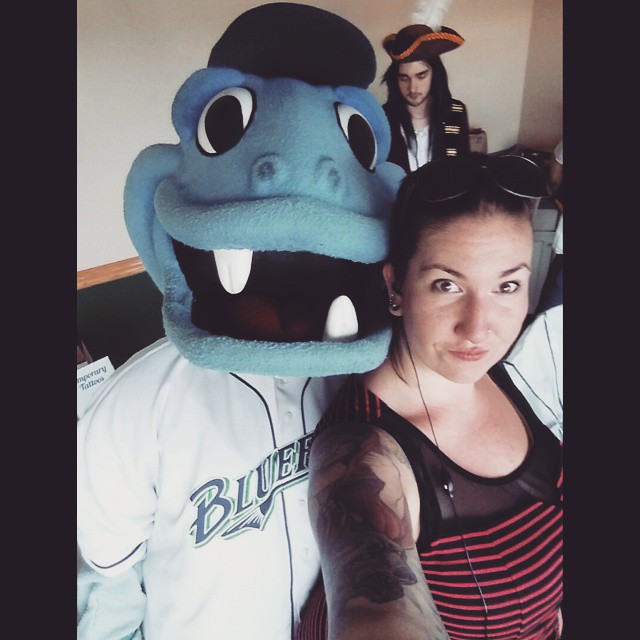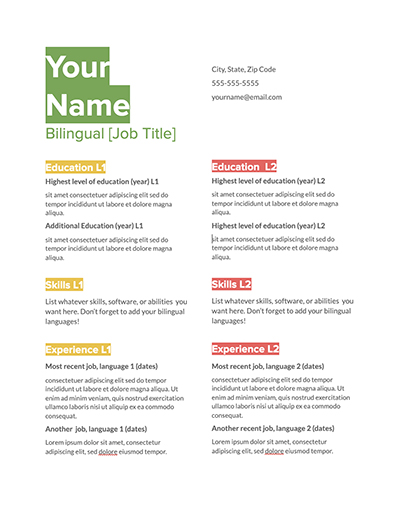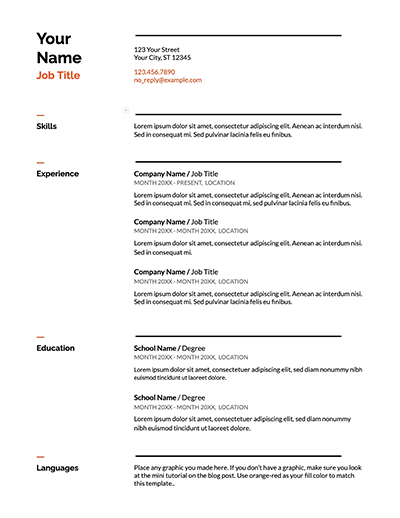Bilingual Resume (Examples, Tips, Templates)

Building a bilingual resume can be incredibly rewarding–even if actually making your resume bilingual can feel overwhelming.
As a bilingual person who has done hiring for 3 different companies (including my own talent agency), I’ve found that (1) bilingual resumes catch my attention and (2) actually get me excited to interview the person.
By the end of this article, you will:
- know whether or not your resume should be bilingual;
- decide on what kind of bilingual resume you should have;
- know how to add language skills to your resume; and
- be able to construct your own bilingual with confidence.
BONUS: free templates at the end, plus a tutorial so you can edit them on Google Drive.

As a hiring manager, I know that bilingual job candidates are interesting to interview, culturally competent, and a linguistic asset to any organization.
But you might need some extra help.
Because in countries with long histories of discrimination against bilingual people (like the US and Canada), there are also reasons not to make your resume bilingual.
So how do you put languages on a resume?
How do make a totally bilingual resume?
Let’s take a look.
A Bilingual Resume VS A Resume for a Bilingual Person
Depending on the type of job you’re going for, there are two types of bilingual resumes you might want to make.
Let’s look at how you can make them, and what the strengths and benefits of each type are.
TYPE 1: a bilingual resume written in two languages
First, let’s look at why you might want to write your resume in two languages.
- You may not know which language you’re going to interview in, so showcasing two languages on your resume demonstrates that you’re happy to work in either. For example, in Canada many government posts require that you speak both national languages: English and French.
- If you’re interviewing for a company where a non-dominant language is spoken, you might want to stress that you can be interviewed in that language–but also work in the national language. For example, in the US you may want to apply for a job where Spanish is spoken in the workplace so you’re prepared to be interviewed in that language. But your English is also flawless, and want to make sure they know you can work with outsiders as well.
- The main skill you’re showing off is your linguistic ability. If you’re going for a job as a translator, language teacher, or interpreter, having a resume in two languages can be a great way to show your skills instead of just explaining them.
For cases like this, you have several options:
- A two-column resume with the same information listed twice on each side.
- Two different attachments of the same resume, one in each language.
- A two-page resume, the first in the dominant business language and the second in the other language.

Here, you can see one template that I like for a short resume: the two-column one. But the other solutions work fine too.
The immediate win is that your bilingual resume will stand out from the monolingual resumes (even if the other candidates are also bilingual), and your skill with both of your languages will be evident immediately.
However, here are some reasons you shouldn’t have your bilingual resume in two languages.
- If your potential employer is not bilingual in those two languages, it might be alienating them.
- Resumes like this can look repetitive and like you’re “fluffing” them because you lack experience.
- If you have more experience that you want to add but not a lot of extra space on your resume, you might be wasting valuable page space.
If you don’t want to make a bilingual resume which is written in two languages, your next option is to write a resume that simply says you’re bilingual.
TYPE 2: A resume written in one language that demonstrates bilingual skills
Here’s why you would want to list your bilingualism to your resume when applying for jobs.
- If you’re working with the public in a country with large immigrant or indigenous populations, bilingualism can be essential across sectors. It may be a requirement for some posts.
- In office jobs like marketing or manufacturing, growing globalization means that bilingualism may come in handy even if it’s not essential to the job. This will help separate you from other candidates.
Now farther down in this article, we’ll get to why you might not want to list your bilingualism on a resume.
But for now, if you want a bilingual resume written in one language, here is how you can list your skill.
- Skills. This is the easiest way. You can list “bilingual in ____ and ____” under the nice big “additional skills” section of your resume. This is where you would add other skills such as typing word per minute, software abilities, or anything else brag-worthy. You can find some great skills examples here.
- Past job experience. If you had a job where you helped customers in two or more languages, simply add that under the responsibilities of that position.
- Education. If you became bilingual as an older child or adult, you can add where you learned the skill on your resume under Education (if it happened in high school or university) or under Continuing Education (if you learned it in another institution).

My advice is to go with the skills section of your resume if you have one.
And if you do put your bilingualism in that section, here are a few ways to make it sound good.
For these examples, we’ll pretend this job candidate is bilingual in English and Korean while living in the United States to give you some examples.
(Of course, fill in the blanks with whatever two languages you speak.)
- “Bilingual in English and Korean.” If you’re not sure how else you want to list your two languages, this is fine. But “bilingual” is a huge group of people, and it leaves a lot of speculation to the employer. So for me personally, this is the least impactful way to list your bilingualism.
- “Balanced Bilingual in English and Korean.” If you have two languages at the same skill level, “balanced bilingual” helps clarify that a little–although very few people are truly balanced. So let’s keep reading.
- “Native English Speaker with Advanced Korean Skills.” This is great for people who learned their bilingual language as an adult, or children who grew up in an English speaking environment so speak a slightly-weaker (but still good) heritage language.
- “Native Korean Speaker with Advanced English Skills.” We’ll get into racism soon, but unfortunately, the reality is that many monolingual employers might make unfair judgments on immigrant candidates. If you are a native speaker of a non-dominant language but also skilled in English, you may not want to word your resume like this to avoid discrimination. I would recommend the “balanced bilingual” approach as listed above.
- “English Speaker with Korean Customer Service Skills.” If you speak enough of the language to help someone in need, but not enough to do business, this might be for you.
- “Advanced Listening/Speaking Skills in Korean.” If you grew up using your bilingual language at home, but can’t read or write in it, that’s ok. Just let the employer know that. For this type of bilingual, I also don’t think you need to include that you speak English in this section because that will be clear in the context of your English resume.
So now that we’ve gone over why you might want a bilingual resume, I also want to talk about why you might not want a bilingual resume.
The next part of this article was difficult to write, but I’ve seen many coworkers make subconscious decisions about a candidate based on which languages they spoke. So it’s important for me to address that now.





